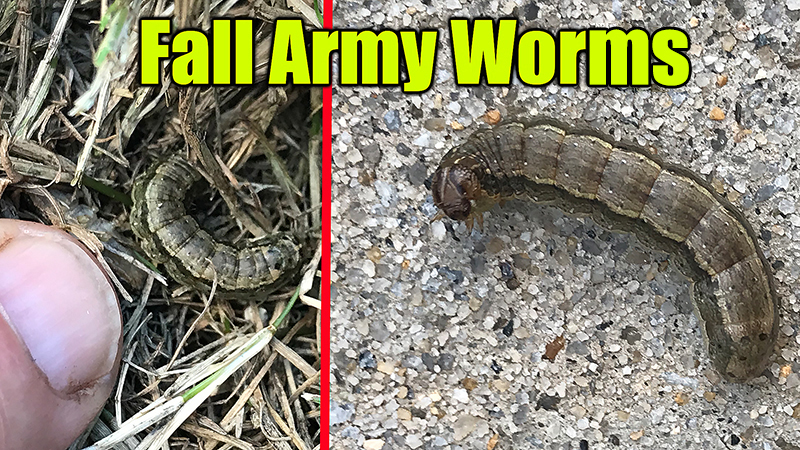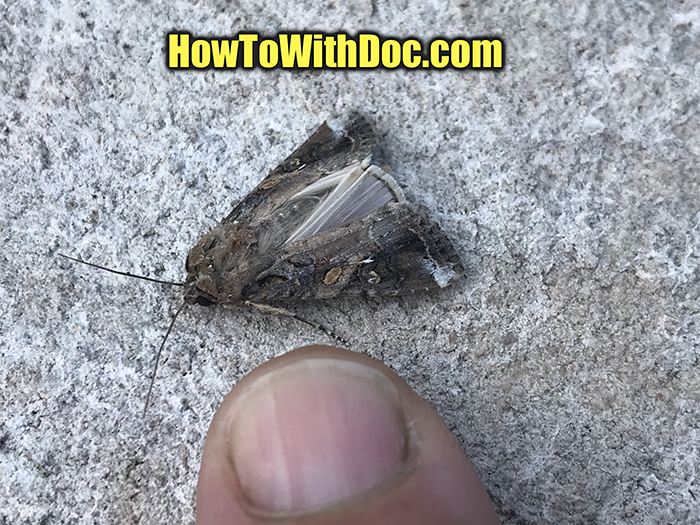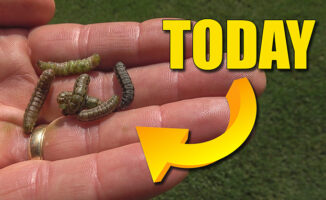Kill Armyworms in Lawn
Lawn Armyworms can be found in most southern lawns but especially in Bermuda lawns. The fall armyworm has a life cycle that keeps them in our lawns for up to 3 months in the fall. Doc shows you how to detect armyworms and how to kill fall armyworms. This is done via a DUAL treatment of both granular and spray. The spray will act fast but not last long. The granular will last longer and keep killing for up to 3 weeks.
Armyworm Control Video
Lawn Armyworm Killing Products
Armyworm Info
When a homeowner discovers an army of caterpillars marching across his lawn, devouring the Bermuda grass, this aphorism is proved true for the insect world as well! Armyworm caterpillars are incredibly voracious as they feed on Bermuda grass pastures and lawns in August and September.
The first signs are brown patches of Bermuda which rapidly grow bigger. The caterpillars feed at night, so the damage is not explainable at first. Your first sign of a fall armyworm infestation might be several birds clustered on a turf area. Although birds eat the caterpillars, they are no match for hundreds of them in one lawn.
As their numbers grow, entire lawns and fields can be eaten to the ground. The caterpillar is approximately 1 1/2 inch long, with white stripes down its body. There are usually two angled stripes on its head – joined to a longer stripe, the marking looks like a long “Y”.
If you have had army worms before, there is an easy early detection system: a gallon can with both ends removed and a bucket of soapy water. By plunging the can firmly into the turf and filling it with soapy water, caterpillars in hiding will quickly float to the surface. If more than five are found in the water, it’s time to treat.
Lawn Armyworm Links
Some good reading on lawn armyworms.
https://content.ces.ncsu.edu/fall-armyworm-in-turf
https://secure.caes.uga.edu/extension/publications/files/pdf/C%201130_1.PDF

Armyworm moths can be seen all day long but they become active early to late evening. This is a MALE armyworm moth and the female looks white to dull gray. If you see a lot of these moths in your lawn you probably need to treat for armyworms.

The fall armyworm (Spodoptera frugiperda) is a species in the order of Lepidoptera and is the larval life stage of a fall armyworm moth. The term “armyworm” can refer to several species, often describing the large-scale invasive behavior of the species’ larval stage. It is regarded as a pest and can damage and destroy a wide variety of crops, which causes large economic damage. Its scientific name derives from frugiperda, which is Latin for lost fruit, named because of the species’ ability to destroy crops. Because of its propensity for destruction, the fall armyworm’s habits and possibilities for crop protection have been studied in depth. It is also a notable case for studying sympatric speciation, as it appears to be diverging into two species currently. Another remarkable trait of the larva is that they practice cannibalism.
The fall armyworm is active at a different time of year than the true armyworm, another species in the order Lepidoptera and family Noctuidae, but of the genus Mythimna. Outbreaks of the true armyworm usually occur during the early part of the summer; the fall armyworm does most damage in the late summer in the southern part of the United States, and early fall in the northern regions
Fall Armyworms in Bermuda grass lawn








